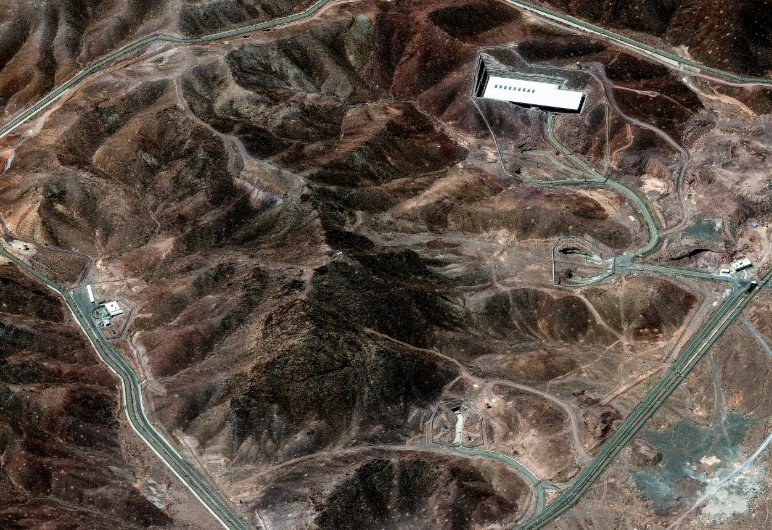Indian Government and Pentagon both refute viral claims linking New Delhi to Operation Midnight Hammer
As misinformation swirled across social media feeds over the weekend, India’s Press Information Bureau stepped in with a sharp, unequivocal rebuttal. No, Indian airspace was not used by American bombers during the United States’ dramatic June 21 military strike on Iran’s nuclear infrastructure.
The clarification came hours after viral claims spread online, alleging that B-2 stealth bombers crossed Indian skies en route to targets deep inside Iran, including the heavily fortified Fordow nuclear facility. But as tensions ran high globally, India took swift steps to distance itself from the military theatre playing out in West Asia.
Fake, and flagged: How the rumor snowballed
The chatter began shortly after the Pentagon revealed limited details about its latest operation — codenamed Midnight Hammer — which targeted Iran’s underground enrichment sites near Qom. A flurry of online posts followed, some citing “aviation trackers” and others relying on unverified military chatter, claiming US aircraft used Indian skies as a corridor to reach Iranian territory.
Within hours, these posts began gaining traction, particularly on X (formerly Twitter) and niche Telegram channels focused on defense affairs. The claim was that B-2s had been spotted over India, a country that maintains delicate ties with both the US and Iran.
That’s when India’s official fact-checking unit stepped in.
“This claim is FAKE,” the PIB Fact Check team posted bluntly on Saturday. “Indian Airspace was NOT used by the United States during Operation #MidnightHammer.”
Their language left little room for interpretation.

US military issues its own denial
The Indian clarification was soon echoed — albeit in more formal tones — by American defense officials.
At a Pentagon briefing late Saturday night, General Dan Caine, Chairman of the Joint Chiefs of Staff, said there was “no flight activity over South Asia” linked to the June 21 airstrike. Instead, he said, American bombers were routed through existing US airbases in the Middle East and via airspace agreements across Mediterranean and allied Gulf nations.
“The mission planning avoided civilian corridors and non-coalition nations,” Caine said. “We used established military transit routes across the Gulf and Eastern Mediterranean zones.”
His comments appeared aimed at de-escalating any diplomatic fallout and reinforcing the image of operational transparency.
India’s balancing act: Strategic, sensitive, silent
India’s quick denial isn’t just about domestic optics — it’s about diplomatic balance.
New Delhi has historically walked a tightrope between Washington and Tehran. While India shares strong defense and energy partnerships with the US, it also has a legacy relationship with Iran that includes strategic port development (Chabahar), regional connectivity, and crude oil trade—though significantly reduced due to US sanctions in recent years.
Had India’s airspace actually been used in an offensive operation against Iran, it would’ve risked a full-blown backlash from Tehran — possibly complicating ties in an already fragile West Asian theatre.
As one former Indian diplomat put it: “Even a whiff of operational support for a military strike on Iran could damage India’s neutral credibility in the Gulf. It’s not just about airspace — it’s about strategic autonomy.”
What we know about Operation Midnight Hammer
The Pentagon has confirmed that Operation Midnight Hammer involved long-range bomber aircraft, specifically B-2 Spirit stealth bombers, hitting targets linked to Iran’s nuclear program, including the Fordow underground enrichment facility located near Qom.
This is reportedly the first time the Fordow site — buried under 80 meters of rock and concrete — has been directly hit. Satellite images released by Maxar Technologies on June 22 showed craters near the perimeter, though Iranian state media claimed the damage was “superficial.”
So far, there’s no confirmed information on whether Iran intends to retaliate. But regional powers have already beefed up air defenses, and oil markets are reacting to the uncertainty.
One US defense official, speaking anonymously to Reuters, described the operation as “surgical, limited, and preemptive,” aimed at degrading Iran’s near-weapons-grade uranium production capabilities.
The rumor mill keeps spinning, but facts catch up
Here’s what we know for sure:
-
India has categorically denied any involvement or support role in the US military operation.
-
US officials have confirmed that no South Asian country’s airspace was used.
-
The viral claim had no basis in verified aviation data or official air traffic logs.
In the table below, we break down the official positions:
| Claim | Source | Status |
|---|---|---|
| US B-2 bombers flew over Indian airspace | Viral social media | False |
| PIB confirmed non-use of Indian airspace | PIB Fact Check, X | Confirmed |
| US bombers launched from Middle East | Pentagon briefing | Confirmed |
| Iran confirms attacks at Fordow facility | IRNA, PressTV | Confirmed |
The information battlefield is just as real
The whole episode reflects a growing challenge for governments: managing truth in an era where information spreads faster than missiles. Defense analysts say such misinformation can fuel diplomatic misunderstandings, fan nationalism, or even provoke real-world consequences.
“Geopolitics is no longer just about missiles or embassies — it’s about who controls the narrative,” said Lt. Gen. Vinod Bhatia (Retd), a former Indian Army officer and strategic affairs analyst.
He adds, “One wrong claim — even if it’s fake — can put countries in awkward positions.”
That’s partly why both India and the US were quick to act. Neither side wants a stray tweet to start a fire that diplomacy later struggles to put out.
